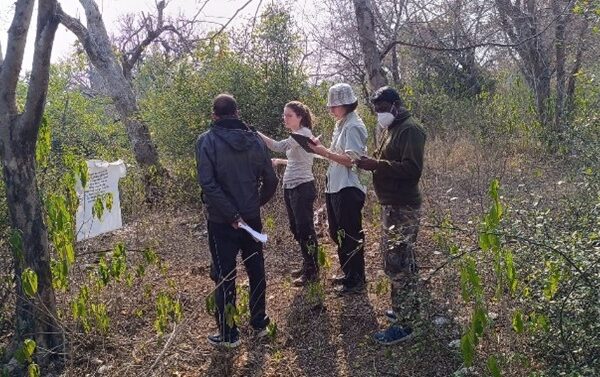
15 February
by Dr Ines Stegmaier & Dr Sonika B.L
After a few long days, everyone was quite happy to enjoy a relaxed morning, starting with breakfast at 9 am, some relaxation in the sun, and the message that a leopard got caught on one of the camera traps. From 10 am onwards, it was all about disease outbreak investigation. Dr Tony Sainsbury introduced us to the principles of an outbreak investigation in free-living animals. As chance would have it, there was a mass mortality event happening amongst ungulates at Sariska on this exact morning and our expert knowledge was much needed.
We teamed up in small groups and discussed our approach to the investigation, including the information, equipment, and personnel needed, what data and samples to collect at what time, and who to communicate with. After presenting our plans to the whole group and getting some important feedback, we went for a well-deserved lunch break that provided us with the necessary strength for the practical investigation of the disease outbreak. The investigation teams paved their way through some rough terrain, examining the “carcasses” and collecting data in the hot midday sun. Afterwards, the essential case definition was discussed over some tea.
As a preparation for tomorrow, we received an introduction to post-mortem examinations in free-living animals as the last lecture of the day. To avoid the imminent rise of boredom after a day full of lectures, practicals and discussions, Dr Parag Nigam provided us with a video presentation on gaur reintroduction in India while sitting around the bonfire. Following, we were able to get to know the peculiar species of the Mishmi takin before it was time for another exquisite dinner.



